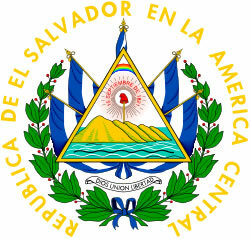THE economic geography it is the branch of knowledge responsible for understanding the logic of production and distribution of economic activities. In addition, it aims to understand the influence of these productive manifestations on the geographic space and the interferences that the environment performs on them.
We can consider that the geographical space, both in urban and rural areas is essentially produced, that is, it is constructed by human practices. The establishment of these practices is, almost always, related to the manifestation of conducts in the financial and technological environment that will sustain impact actions.
An example of the economic effects on the geographical environment is the occurrence of the III Industrial Revolution which, via the “green revolution”, managed to dynamize and, at the same time, mechanize production in the countryside, which resulted in the expansion of the agricultural frontier in Brazil and the intensification of rural exodus in underdeveloped societies in general.
Do not stop now... There's more after the advertising ;)
In practical terms, economic geography studies are usually divided into three main parts: a) the distribution of economic and productive activities over space; b) the history of economic structures and c) the analysis of the composition of the economy at the regional level and its relationship with global dynamics.
In this section, we hope to provide opportunities for the establishment of a study site for the theme in question, focusing on themes such as production and industrial location, the globalization process, the effects of technological changes and many other essential issues for understanding the social geographic space and its transformations.
Good reading!
By Rodolfo Alves Pena
Graduated in Geography

question 1
“At the beginning of human history, the territorial configuration is simply the set of natural complexes. As history unfolds, the territorial configuration is given by the works of men: roads, plantations, houses, warehouses, ports, factories, cities, etc; true prostheses. A territorial configuration is created that is increasingly the result of a historical production and tends to a denial of natural nature, replacing it with a fully humanized nature”.
(SAINTS, Milton. The Nature of Space: Technique and Time; Reason and Emotion. 4th ed. São Paulo: EdUSP, 2006. p.39.)
About the production and transformation of space, check the correct alternative:
a) The space of societies is built from elements of nature in their pure form.
b) The different places and regions in the capitalist world do not differ much from each other, as the production of space is relatively homogeneous and egalitarian.
c) We can say that “production of space” means the construction by man of his own environment.
d) Production techniques interfere little in the formation of the space of societies.
e) The social geographic space, currently, is limited to the construction of cities and houses.
question 2
The spatialization of global industrial production is based on a logic in which:
a) underdeveloped and emerging countries supply raw materials and industrial products, while developed economies specialize in highly technological goods and production.
b) the central countries completely abandon the manufacture of secondary products, allocating their efforts only to the tertiary sector.
c) the expression of commercial capitalism organizes productive actions for the dominant fields of the global economy.
d) industrialization manifests itself only in economically stable areas, being an indication of regional or national technological advance.
See answer

